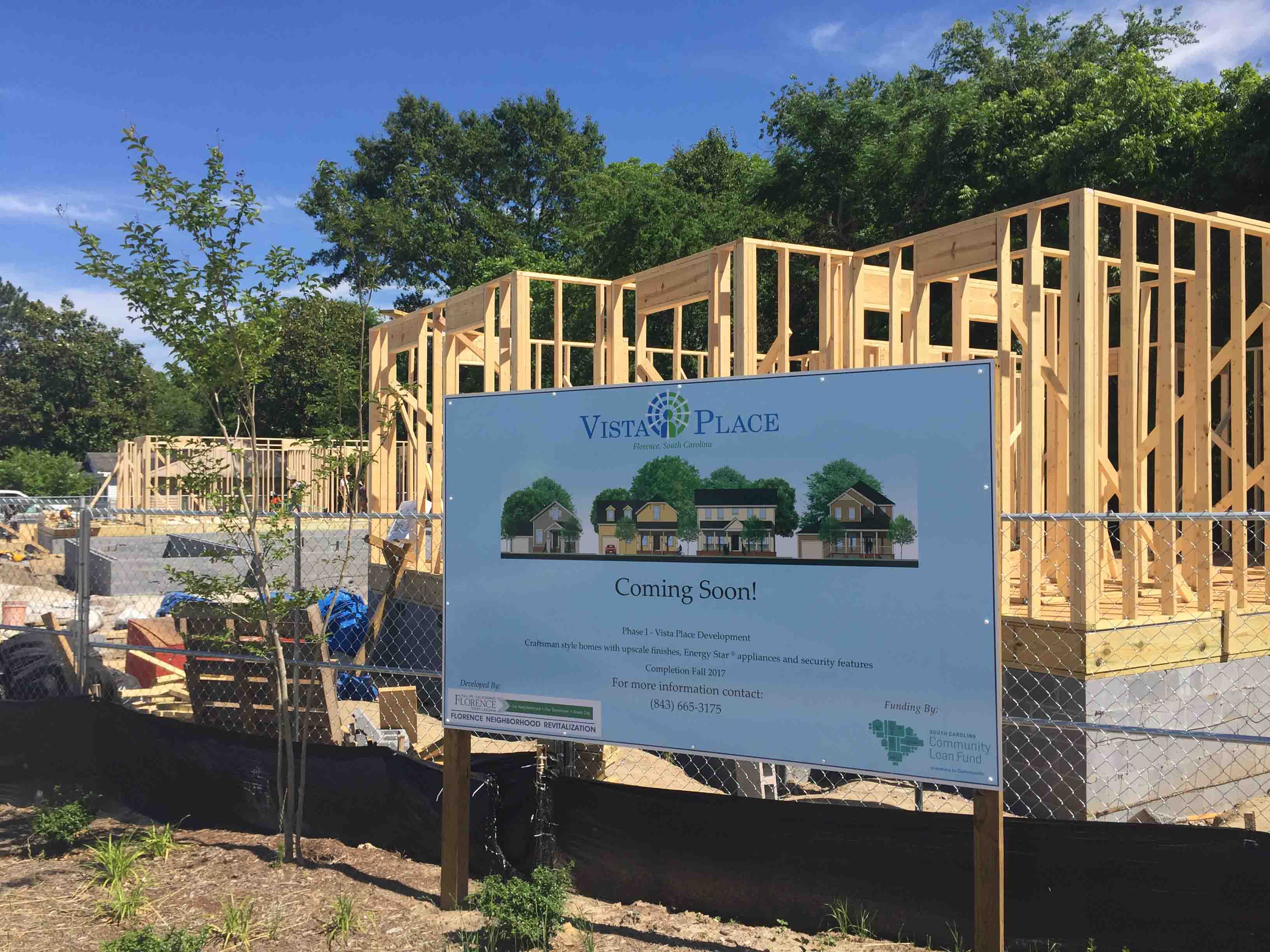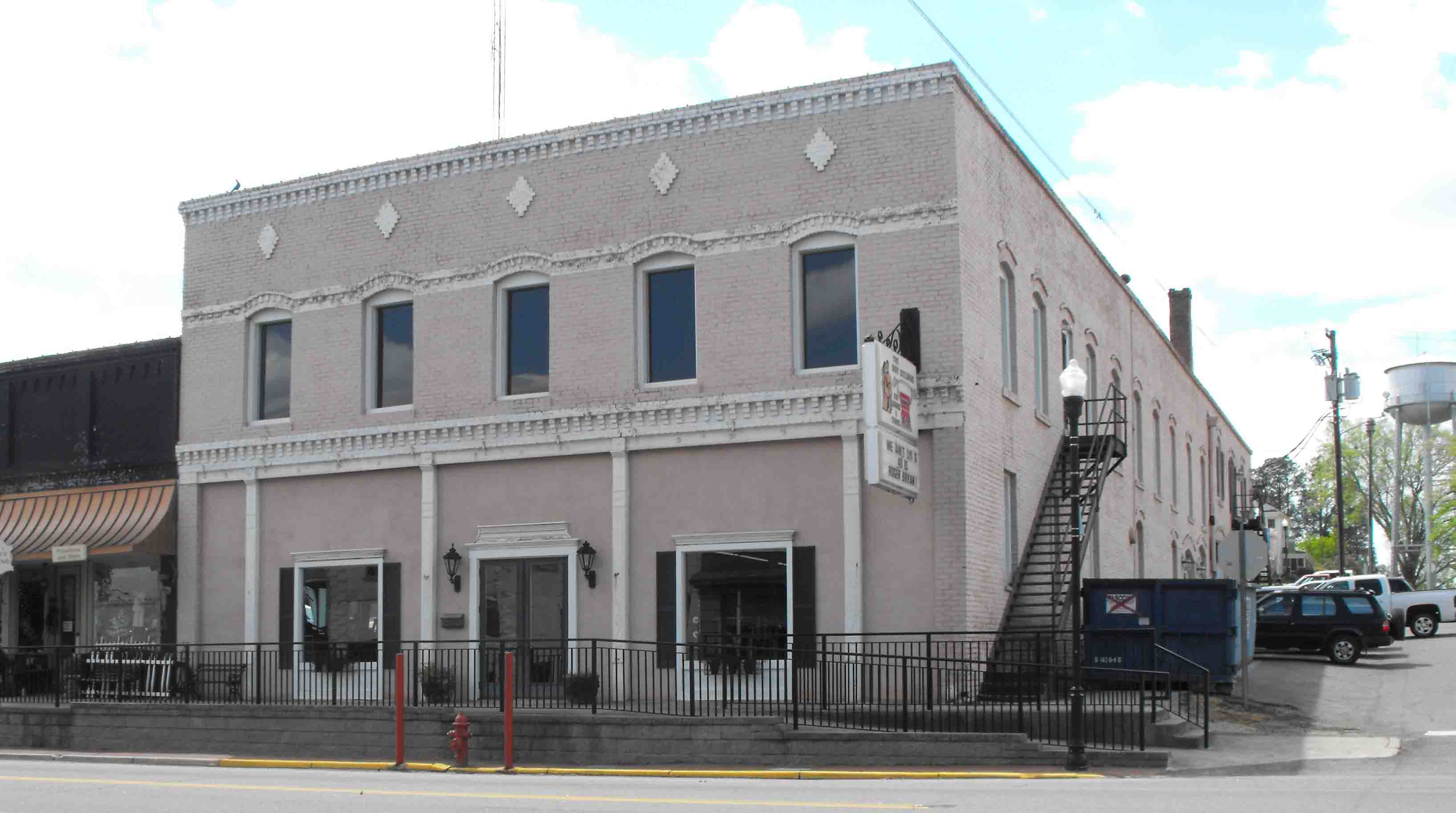Offering a diverse mix of housing to welcome a diverse mix of residents is one way cities and towns across South Carolina are trying to foster community development.

In Florence, new homes in Vista Place support community
development and downtown neighborhoods. Photo: City of Florence.
From offering financial incentives that encourage home ownership in struggling neighborhoods to securing grants that help provide apartments for teachers, there are lots of ways to create more accessible housing opportunities.
It's more than just the right thing to do for residents. Affordable housing makes good economic sense for a community.
"Creating and maintaining housing that is safe, decent and affordable is an integral component of community development efforts. Affordable/workforce housing is the cornerstone for improving and developing neighborhoods and communities," said Erica Craft, director of the community development division in the City of Anderson.
"It creates opportunities for low to moderate income persons to have a desirable place to live, work and play."
She said affordable housing contributes to a city's tax base and can be a catalyst for spurring economic development in neighborhoods.
The key is finding the best way to make it happen.
In recent years, the City of Florence offered incentives to the central business district to encourage the flow of private money into a resurging downtown. But many of the historic areas near downtown were left behind, particularly some African-American neighborhoods where housing values had been in decline for decades.
About five years ago, Florence city officials held a series of public meetings to listen to the concerns of residents in the affected historic neighborhoods and hired an urban planning consultant. The result was the Florence Neighborhood Revitalization Plan, which focuses on four downtown neighborhoods.
Florence committed $3 million to construction and incentive costs and another $6 million to street and infrastructure improvements, including new sidewalks, curbing, pocket parks and bike lanes, Florence City Manager Drew Griffin said. So far, the city has purchased 30 abandoned and dilapidated houses, and is in the middle of building the first seven houses. City officials expect 20 to 50 new houses to be built over the next five years.
In a development called Vista Place, for example, the new houses will be in the same style and character of the historic neighborhood but will be priced above current market value as a way to re-establish the housing market there. Lending had been limited in some neighborhoods, because lenders had been hesitant to loan to potential home buyers due to appraisals and poor "comps," which reflect figures from recently sold, nearby properties.
The city is creating down payment and purchase incentives for qualified buyers that cover the gap between cost and market value.
The city also developed an incentive program for builders and developers to finance construction loans, renovation loans and marketing expenses. Griffin said developing banking relationships has been one of the city's big successes, growing from an agreement with one community bank to a program that now includes three more banks.
Neighborhood groups were skeptical at first. Residents were wary of gentrification and concerned about the city's commitment to the project.
"Because we said things like this in prior times and never fulfilled it, this time when we stepped in, we had to be committed," Griffin said. "There was a feeling in the community that they'd heard it all before. You've got to be really honest. For us to bridge that gap, it took almost two years."
Griffin's advice for other cities? Be committed to the long haul before you start.
Living where they teach
Recruiting public school teachers to rural areas is already challenging. And then asking teachers to commute long distances to their school only makes the hiring environment tougher.

The Town of Saluda worked with a downtown property
owner to convert his building into residential units for teachers.
In the Town of Saluda, a need for housing for teachers in 2009 led the town to provide a matching grant to a developer who renovated an apartment building downtown. A community development block grant and a workforce housing grant from the S.C. State Housing Finance and Development Authority also helped the project become a reality. The apartment building became so popular that there was a waiting list. Some eight years later, that's still the case.
"There weren't any good rental units," said Tom Brooks, Saluda town administrator. "So you're trying to recruit young teachers to come into your community, and there's really no place nice to live other than renting a house out in the country."
Although it's still largely occupied by teachers, Brooks said a town employee and police officer have also moved into the apartment building. "It puts people living in your core business district," said Brooks.
He said it's hard to tell if there was a direct cause-and-effect correlation, but since the teacher apartments went in, several older buildings that were abandoned for years have come back to life, in part, because of a façade program the city initiated.
Diverse ages, groups seek affordable housing
In Mount Pleasant, the rapid growth and increase in the cost of housing has caused city planners to revisit ordinances and evaluate growth management issues. The city saw a 66 percent growth in population from 2000 to 2015.
The city created a task force last year to look at the issue of affordable housing. The task force learned that people who are unable to find affordable housing are not just those in the service industry or at the low end of the income spectrum. Growing numbers of seniors and middle income people also struggle to afford to live in Mount Pleasant.
Also, redevelopment of historic African-American neighborhoods is pricing out some of the residents who currently live there. Development pressures often increase land values and rents, which then affect existing residents, potentially destroying communities of historical and cultural importance.
The task force recommendations include: educating town residents about the need and importance of affordable housing; identifying areas for potential development/redevelopment for affordable housing, giving consideration to access to public transportation and other essential services; and preserving the town's history and culture, including the historic African-American communities.
The committee also pushed for establishing a 501(c)3 nonprofit housing development corporation with a focus on affordable and mixed income housing developments, appointing a standing affordable housing committee and creating a staff position to work on affordable housing issues.
"A lot of the recommendations fit back with our comprehensive plan. They relate to the needs of an aging community and the impact growth has on people's ability to stay in their homes. There's an emphasis on the African-American community being able to stay in their homes," said Christiane Farrell, assistant town administrator for the town of Mount Pleasant.
"They also looked at transportation and how that can relate to affordable housing."
The planning staff will determine what can be accomplished now and what will be addressed as work begins this summer on the town's comprehensive plan, which is the basis for the zoning ordinance.
"We will definitely be moving forward with a lot of the recommendations," Farrell said.
